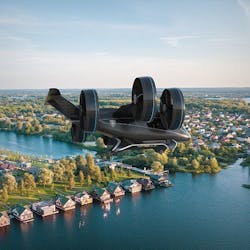Study highlights sustainable role for VTOL aircraft
Continue reading original article
The Intelligent Aerospace take:
April 10, 2019 -The University of Michigan and Ford study is focused on the environmental feasibility of VTOL aircraft rather than engineering, but because VTOL air systems do not have to follow roads and will likely carry more passengers on aggregate than a traditional internal combustion engine automobile, it will have a "greener" carbon footprint during intermediate distance trips of 100km (62 miles).
“To me, it was very surprising to see that VTOLs were competitive with regard to energy use and greenhouse gas emissions in certain scenarios,” said Gregory Keoleian, senior author of the study and director of the Center for Sustainable Systems at U-M’s School for Environment and Sustainability. “VTOLs with full occupancy could outperform ground-based cars for trips from San Francisco to San Jose or from Detroit to Cleveland, for example.”
Related: Bell and Rolls-Royce collaborate on next-gen VTOL propulsion systems
Related: Boeing's autonomous electronic VTOL passenger vehicle completes first flight
Related: Bell and Moog ink deal on VTOL flight control actuation system for Bell's Air Taxi
Jamie Whitney, Associate Editor
Intelligent Aerospace
Ready to make a purchase? Search the Intelligent Aerospace Buyer's Guide for companies, new products, press releases, and videos
